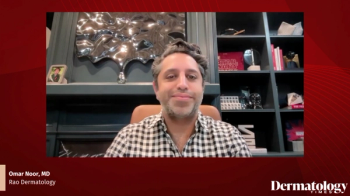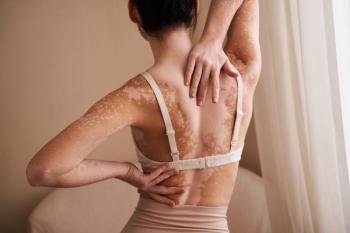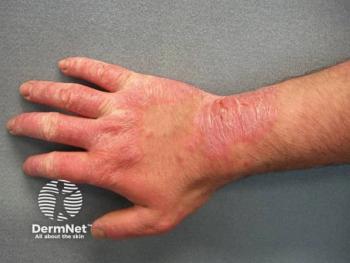
HS Uncovered: Global Survey Highlights Patient Perspectives and Psychosocial Impact
Key Takeaways
- The survey involved 656 participants, with 505 diagnosed with HS, highlighting the disease's significant psychosocial and financial impact.
- HS significantly affects quality of life, with 41% and 28% of patients reporting very large or extremely large impacts, respectively.
A global survey reveals the significant psychosocial and financial burdens of hidradenitis suppurativa, highlighting the need for improved patient care and treatment options.
Global results from a recent survey have given clinical insights into the psychosocial impact hidradenitis suppurativa (HS) may have on patients across the world.1 “HS Uncovered” Burden of Disease Survey was created to help providers better understand patient journeys and perspectives with HS.
The real-world, quantitative online survey included data from 656 patients. Of these, 505 were diagnosed with HS, while 151 suspected that they had HS due to symptoms such as nodules/boils, abscesses, and tunnels. Each patient had greater than or equal to 2 outbreaks in the past 6 months and had seen a physician about their skin. In most patients, initial HS symptoms first appeared between the ages of 18 and 31 years, with an average of 5.9 years occurring between initial symptoms and an HS diagnosis.
The survey included 70 questions and took approximately 35 minutes to finish. It was developed in collaboration with dermatologists, surgeons, patient representatives, and other HS experts. Results were collected from December 2022 to March 2023 in 6 countries (US, UK, Germany, France, Italy, and Spain). The majority of patients were White (80%). The mean age was 41 years, and 65% of participants were women. It has been proven that women are more frequently affected by HS than men.2
Several patient-reported outcome measure tools were utilized, including the Patient Activation Measure (PAM-13), Dermatology Life Quality Index (DLQI), Work Productivity and Activity Impairment Questionnaire, and Hospital Anxiety and Depression Scale (HADS). Investigators also asked questions regarding monthly spending due to HS, potential concerns over family planning, and how HS affects pain, emotions, self-esteem, intimacy, and social life. The level of patient activation using PAM-13 was the primary end point; this assesses patients’ knowledge, skills, and confidence in managing their disease. On a scale from 0 to 100, a PAM-13 score of greater than or equal to 55.2 was considered activated.
Approximately 66% of diagnosed patients reported high PAM-13 scores (level 3/4), with a higher proportion of women reporting a PAM-13 level of 4 compared with men. HS had a very large or extremely large impact on quality of life in 41% and 28% of surveyors, respectively. This was indicative of DLQI scores between 11 and 20 and 21 and 30. These rates were higher among participants with level 3 and 4 PAM-13 scores. Patients who lived in the US and were Hispanic reported an extremely large effect compared with other groups.
Approximately 85% of employed patients expressed that their disease impaired their ability to work productively. The mean hours of work missed in a week were 8 hours in diagnosed patients. These levels of absenteeism, presenteeism, and activity impairment were higher in men than in women. However, in women, 52% believed that HS impacted their family planning. The amount of money spent on HS in an average month ranged from €0 to €2778, with an average of €214.
Fifty-three percent and 29% of diagnosed patients had abnormal levels of anxiety and depression, based on a HADS score between 11 and 21. The rates of abnormal depression were higher in women vs men. Additionally, Black participants had lower levels of abnormal anxiety compared with White and Hispanic patients.
Antibiotics were the most frequently reported treatment methods in this patient population. When seeking out treatments for HS, nearly 60% of participants looked for pain relief as the most important feature of their therapy. More than 50% were currently unsatisfied with the level of disease control their treatments provided, as symptoms were not adequately treated or the medication eventually stopped working overall.
There is currently a lack of large-scale global data related to the psychosocial and financial impact of HS on patients. The HS Uncovered survey was created to address these gaps.
“People with HS have positive health-seeking behavior and are active in their care decisions, but improvements are needed in the patient journey to ensure timely diagnosis of HS and access to [health care providers] and effective treatments,” the authors concluded. “There is an unmet need for effective treatments that provide sustained pain reduction as well as sustained improvement in work productivity.”
References
1. Kokolakis G, Vilarrasa E, Garg A, et al. Patient perspectives on the impact of living with hidradenitis suppurativa: results from the Global ‘HS Uncovered’ Burden of Disease Survey. JEADV Clinical Practice.
2. Garg A, Kirby JS, Lavian J, Lin G, Strunk A. Sex- and age-adjusted population analysis of prevalence estimates for hidradenitis suppurativa in the United States. JAMA Dermatol. 2017;153(8):760-764. doi:10.1001/jamadermatol.2017.0201
Newsletter
Like what you’re reading? Subscribe to Dermatology Times for weekly updates on therapies, innovations, and real-world practice tips.



















